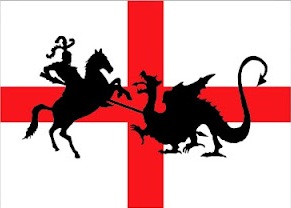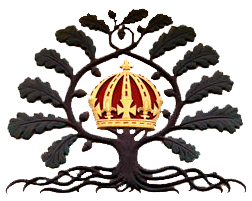Cranmer's Ambiguous Legacy
 Embryo Parson Posted on
Embryo Parson Posted on  Tuesday, April 15, 2014 at 06:55PM
Tuesday, April 15, 2014 at 06:55PM The observations of Diarmaid MacCulloch in this article are consistent with the findings of two books I recently read by scholars of the English Reformation, Straightening the Altars: The Ecclesiastical Vision and Pastoral Achievements of the Progressive Bishops Under Elizabeth I, 1559-1579 (Scott Wenig, with whom I attended seminary in the early 1980s) and Anti-Calvinists: The Rise of English Arminianism c. 1590-1640 (Nicholas Tyacke). All three authors paint a picture of an English Reformation not fully realized (meaning not fully realized as the Reformers envisioned it, not as the Puritans did). Thus, the English Reformation is one that was short-circuited by various political, theological, ecclesiastical and ideological forces, which largely explains Anglicanism's "identity" problem today. MacCulloch speculates about what may very well have happened without the early interventions (and not all of them would have been desirable in my estimation):
Archbishop Thomas Cranmer died at the stake in 1556, a martyr for the English Reformation; but did he die a martyr for the Church of England or for Anglicanism? If we examine Cranmer's career after he parted company in the early 1530s with the Catholicism of his first forty years, we find a man of international perspective, who sought to move England into the path of the wider European Reformation: in particular towards the Reformations to be found in the churches of south Germany and Switzerland. After Cranmer's death, most of these churches would be labelled 'Calvinist' or 'Reformed'. He would not have recognised these descriptions, but if he had lived, it is very likely that he would have done his best to take the English church in the same direction. . . .
Archbishop Cranmer, living to his allotted three-score years and ten or beyond, could produce a third version of his two earlier Prayer Books of 1549 and 1552, in the light of friendly criticism from continental reformers whom he respected, like Peter Martyr, Johann Heinrich Bullinger and Calvin. He would be succeeded as archbishop by Nicholas Ridley or Robert Holgate, with energetic younger. reformers like Edmund Grindal ready to make their mark and pick up good ideas from the best reformed churches of Europe. The Scots immigrant John Knox, mellowed by an increasingly successful career in the Church of England, would be appointed Bishop of Newcastle, benevolently taking no notice of the advanced congregations in his diocese who received communion sitting; this was a practice in any case increasingly common throughout Jane's Church, despite Cranmer's grumbles. Cranmer's cherished reform of the old popish canon law would be achieved; the primer and catechism published at the very end of Edward's reign in 1553 would become the standards; the Forty-two Articles would have been unmodified by Elizabethan hesitations about relegating the significance of the sacrament of Holy Communion to that merely of a symbolic repetition.
Out in the parishes, metrical psalms in the style of Geneva would quickly have spread: these were the best secret weapon of the English Reformation, making its public worship and private devotional practice genuinely popular throughout increasing areas of the kingdom. This congregational music would also take over in the cathedrals, now devoid of choirs or polyphony, and with their organs (where they survived) used mainly for entertainment in the Dutch fashion. The conservative nobility would continue the sullen public compliance with religious change which they had shown under Edward VI, their private celebration of ceremonial worship tolerated as eccentricity, like the Lady Elizabeth's patronage of choral music in her own chapel.
The traditionalist higher clergy would gradually die off in senior church offices and the universities, with no possibility of like-minded replacement: since the universities produced no major haemorrhage of exiles in the 1560s, the Jesuits and other religious orders would find it difficult to recruit potential clergy to train for their attempt to treat Jane's England as a mission field. England would have become the most powerful political player in the Reformed camp, with Cranmer a cordial if geographically distant partner with John Calvin. It is powerfully symbolic that it was Cranmer's son-in-law Thomas Norton who translated Calvin's Institutes into English, and Cranmer's veteran printer Reyner Wolfe who published it. With a Cranmer-Calvin axis, the profile of Reformed religion across the whole Continent would have been changed, and with the help and encouragement of Bishop Knox, the Reformation in Scotland might have followed a close path to the Reformed Church of England.
That is the history that never happened. . . .
Today Anglicanism makes much of its position as a 'middle way' (via media) between Roman Catholicism and Protestantism. Standing as he did in the developing Reformed tradition of Europe in the 1550s, Cranmer's conception of a 'middle way' in religion was different. The middle ground which he sought was the same as Bucer's: an agreement between Wittenberg and Zurich which would provide a united vision of Christian doctrine against the counterfeit being refurbished at the Council of Trent. For him, Catholicism was to be found in the scatterered churches of the Reformation, and. it was his aim to show forth their unity to prove their Catholicity.





Reader Comments (2)
The real "middle ground" and "middle time" was from about 1535-1545. After the failed Marburg Colloquy between Lutherans and Reformed (1529) & the presentation of the 3 confessions to Emperor Charles V at Augsburg in 1530 (Zwingli's, Bucer's, & Melanchthon's) and before Trent (1546). And it heavily involved two giants, Melanchthon and Bucer. Both worked tirelessly to overcome divisions with their own respective groupings (Lutheran and Reformed) as well as between the two, and even had hope of reconciling Rome. See their work in... The Wittenberg Concord, over the Eucharist (1536). In Melanchthon's AC Variata (1540). In the Regensberg Dialog with the RCs (early 1540s). In the ultimately failed Reformation in Cologne and Archbishop Wied (1542-1546). Sadly, both Bucer and Melanchthon were disavowed by the partisans of their own groupings. Master Philip's last 15 years were spent arguing with Gnesio-Lutherans over the Adiaphorist Controversy, the Synergist Controversy, the Majorist Controversy, and more. I suspect Bucer knew it was over when Calvin and Bullinger agreed in 1549 on the Eucharist, and there was now no hope for Lutheran-Reformed concensus let alone any hope with Rome (in light of Trent's decrees).
Cranmer was never really at the center of any of this, though he was in contact with the major players. And helped bring Bucer to England after Charles' military victory over the Lutheran princes. Cranmer's focus was mainly on England and the evolving and changing political situation that would determine the final outcome.
I wonder if the major systematic presentation of a mature consensus theology wasn't Melanchthon's Loci Communes 1555/1559? Though Bullinger, in his 2nd Helvetic (1561), certainly did his best attempt? And even the 39 Articles? Which seem both so Lutheran and so Reformed, depending upon perspective and interpretation? But by then it was too late.
Just to note, the metrical psalter (Old and New Versions) was the only legally-sanctioned hymnody in the Church of England until the Oxford Movement (actually, their legal authority has never been rescinded and no other hymnal has ever been authorized for use).